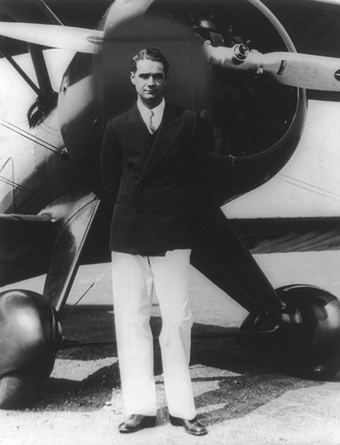HOWARD HUGHES - OWNED AN AIRCRAFT COMPANY,
RKO STUDIOS, TWA AIRLINES, VEGAS CASINOS
AND THE SPRUCE GOOSE AIRCRAFT
Howard Robard Hughes, Jr.
|
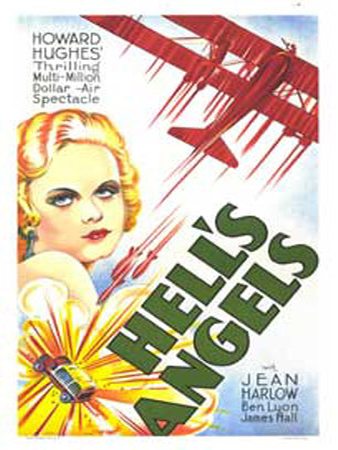 |
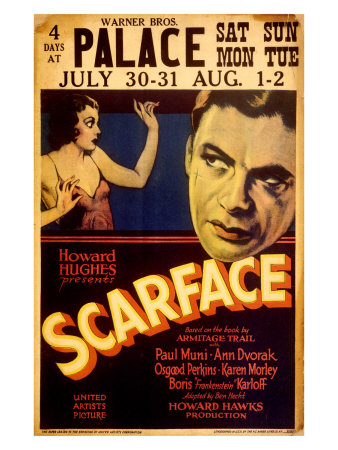 |
His first two films, 1927's Everybody's Acting and 1928's Two Arabian Knights, were financial successes, the latter winning an Academy Award for Best Director of a Comedy Picture. 1928's The Racket and 1931's The Front Page were nominated for Academy Awards. Hughes spent US$3.8 million to make Hell's Angels, an flying film, released in 1930. He produced another hit, Scarface, in 1932. Later he made The Outlaw which featured Jane Russell, for whom Hughes designed a special bra (although Russell decided against wearing the bra because of a mediocre fit). Scarface and The Outlaw both received considerable attention from industry censors; Scarface for its violence, The Outlaw due to Russell's revealing costumes.
Hughes wife returned to Houston in 1929 and filed for divorce. Hughes went out with many famous women, including Billie Dove, Bette Davis, Ava Gardner, Olivia de Havilland, Katharine Hepburn and Gene Tierney. He also proposed to Joan Fontaine several times, according to her autobiography No Bed of Roses. Bessie Love was a mistress during his first marriage. Jean Harlow accompanied him to the premiere of Hell's Angels, butNoah Dietrich, wrote many years later that the relationship was strictly professional—Hughes personally disliked Harlow. In his 1971 book, Howard: The Amazing Mr. Hughes, Dietrich said that Hughes genuinely liked and respected Jane Russell but never sought romantic involvement with her. According to Russell's autobiography, however, Hughes once tried to bed her after a party. Russell (who was married at the time) refused him and Hughes promised it would never happen again. The two maintained a professional and private friendship for many years. Hughes remained good friends with Tierney – when Tierney's daughter Daria was born deaf and blind with severe mental retardation due to Tierney being exposed to the German Measles during her pregnancy, he saw to it that she received the best medical care and paid all expenses.
On July 11, 1936, a car driven by Hughes struck and killed a pedestrian named Gabriel Meyer at the corner of 3rd Street and Lorraine in Los Angeles. Although Hughes was certified as sober at the hospital to which he was taken after the accident, a doctor there made a note that Hughes had been drinking. He was taken to jail and booked on "suspicion of negligent homicide." A witness to the accident told police that Hughes was driving erratically and too fast, and that Meyer had been standing in the safety zone of a streetcar stop. By the time of the coroner's inquiry, however, the witness had changed his story and claimed that Meyer had moved directly in front of Hughes' car. Hughes made the same claim to reporters outside the inquiry, saying, "I was driving slowly and a man stepped out of the darkness in front of me." The District Attorney recommended that Hughes be cleared of responsibility for Meyer's death.
On January 12, 1957, Hughes married actress Jean Peters, whom he had known in Hollywood for several years.
Aviator and engineer
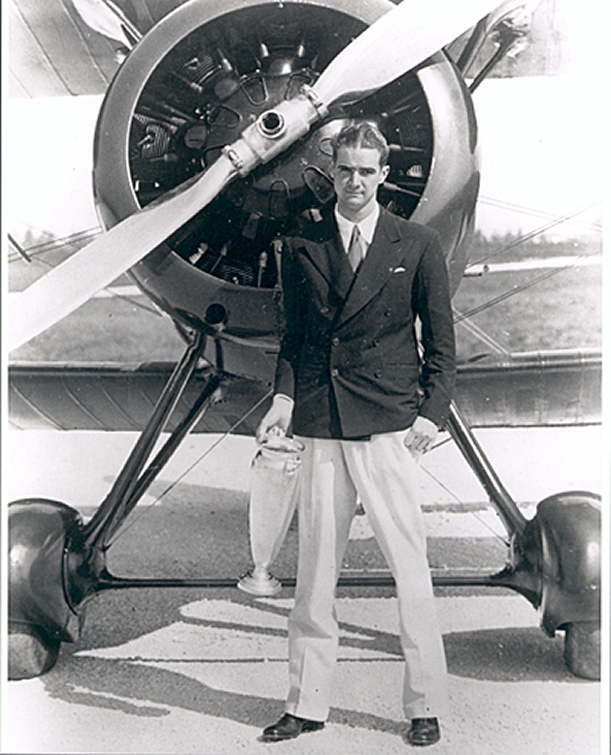 |
Hughes was a lifelong aircraft enthusiast, pilot and self-taught aircraft engineer. At Rogers Airport in Los Angeles, he learned to fly from pioneer aviators, including Moye Stephens. He set many world records and designed and built several aircraft himself while heading Hughes Aircraft at the airport in Glendale. Operating from there, the most technologically important aircraft he designed was the Hughes H-1 Racer. On September 13, 1935, Hughes, flying the H-1, set what was believed to be an airspeed record of 352 mph (566 km/h) over his test course near Santa Ana, California, although it is now recognized that Giuseppe Motta had reached 362 mph in 1929 and George Stainforth reached 407.5 mph in 1931. A year and a half later, (January 19, 1937), flying a re-designed H-1 Racer featuring extended wings, Hughes set a new transcontinental airspeed record by flying non-stop from Los Angeles to New York City in 7 hours, 28 minutes and 25 seconds (beating his own previous record of 9 hours, 27 minutes). His average speed over the flight was 322 mph (518 km/h).
The H-1 Racer featured a number of design innovations: it had retractable landing gear and all rivets and joints set flush into the body of the aircraft to reduce drag. The H-1 Racer is thought to have influenced the design of a number of World War II fighters such as the Mitsubishi Zero, the Focke-Wulf Fw 190 and the F8F Bearcat; although that has never been reliably confirmed. The H-1 Racer was donated to the Smithsonian in 1975 and is on display at the National Air and Space Museum.
On July 10, 1938, Hughes set another record by completing a flight around the world in just 91 hours (3 days, 19 hours), beating the previous record by more than four days. Taking off from New York City, he continued to Paris, Moscow, Omsk, Yakutsk, Anchorage, Minneapolis, and continued to New York City. For this flight he did not fly an aircraft of his own design but a Lockheed Super Electra (a twin-engine transport with a four-man crew) fitted with all of the latest radio and navigational equipment. Hughes wanted the flight to be a triumph of technology, illustrating that safe, long-distance air travel was possible. In 1938, the William P. Hobby Airport in Houston, Texas, known at the time as Houston Municipal Airport, was re-named "Howard Hughes Airport," but the name was changed back after people objected to naming the airport after a living person.
He had a hand in the design and financing of both the Boeing 307 Stratoliner and Lockheed L-049 Constellation.
Hughes received many awards as an aviator, including the Harmon Trophy in 1936 and 1938, the Collier Trophy in 1938, the Octave Chanute Award in 1940, and a special Congressional Gold Medal in 1939 "... in recognition of the achievements of Howard Hughes in advancing the science of aviation and thus bringing great credit to his country throughout the world." According to his obituary in the New York Times, Hughes never bothered to come to Washington to pick up the Congressional Gold Medal. It was eventually mailed to him by President Harry S. Truman.
Near-fatal crash of the XF-11
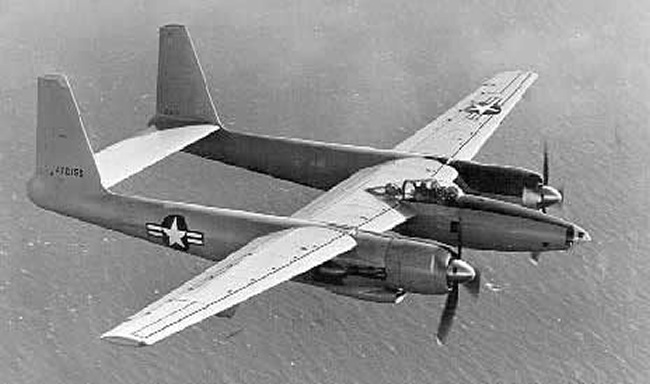 |
Hughes was involved in a near-fatal aircraft accident on July 7, 1946, while piloting the experimental U.S. Army reconnaissance XF-11 over Los Angeles. An oil leak caused one of the counter-rotating propellers to reverse pitch, causing the aircraft to yaw sharply. Hughes tried to save the craft by landing it on the Los Angeles Country Club golf course, but seconds before he could reach his attempted destination, the XF-11 started to drop dramatically and crashed in the Beverly Hills neighborhood surrounding the country club.
When the XF-11 finally skidded to a halt after hitting three houses, the fuel tanks exploded, setting fire to the aircraft and a nearby home. Hughes lay seriously injured beside the burning XF-11 until he was rescued by Marine Master Sergeant William L. Durkin, who happened to be in the area visiting friends. Hughes sustained significant injuries in the crash; including a crushed collar bone, 24 broken ribs and numerous third-degree burns.
However, Hughes was proud of the fact that his mind was still working. Also, as he lay in his hospital bed, he noted that he did not like the design of his bed. He called in plant engineers to design a "tailor-made" bed, equipped with hot and cold running water, built in six sections, and operated by 30 electric motors, with push-button adjustments.
Many attribute his long-term addiction to opiates to his use of morphine as a painkiller during his convalescence. The trademark moustache he wore afterwards was meant to cover a scar on his upper lip resulting from the accident.
Hughes H-4 Hercules
The H-4 Hercules with Hughes at the controlsThe H-4 Hercules was originally contracted by the U.S. government for use in World War II, as a viable way to transport troops and equipment across the Atlantic instead of sea going troop transports that were liable to the threat of German U-Boats. In 1947, it was the largest aircraft ever built, weighing 190 tons and not completed until just after the end of World War II. The Hercules flew only once for a mile (1.6 km) (with Hughes at the controls) on November 2, 1947. The aircraft was nicked the "Spruce Goose" by critics. The aircraft was actually made of birch rather than spruce.
The Hercules has the longest wingspan of any aircraft ever built, at 319 ft, 11 in (97.54 m) (the next largest wingspan is about 30 ft (9 m) shorter), but it is not the longest nor the heaviest. It is the largest flying boat ever built and also the largest aircraft ever made from wood.
Hughes was summoned to testify before the Senate War Investigating Committee to explain why the aircraft had not been delivered to the United States Army Air Forces during the war, but the committee disbanded without releasing a final report. Because the contract required the aircraft to be built of "non-strategic materials," Hughes built the aircraft largely from birch (rather than aluminum) in his Westchester, California facility to fulfill his contract. The aircraft was on display alongside RMS Queen Mary in Long Beach, California for many years before being moved to McMinnville, Oregon, where it is now part of the Evergreen Aviation Museum.
Hughes Aircraft
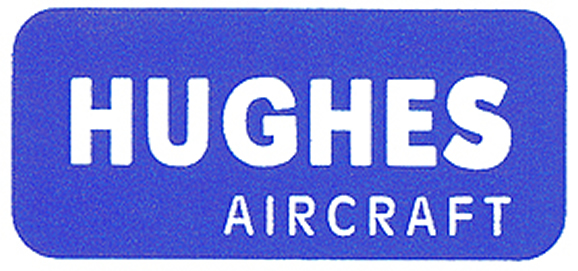 |
Hughes Aircraft Company, a division of Hughes Tool Company, was originally founded by Hughes in 1932, in a rented corner of a Lockheed Aircraft Corporation hangar in Burbank, California, to carry out the expensive conversion of a military aircraft into the H-1 racer. During and after World War II, Hughes fashioned his company into a major defense contractor. The Hughes Helicopters division started in 1947 when helicopter manufacturer Kellett sold their latest design to Hughes for production.
In 1948, Hughes created a new division of the company, the Hughes Aerospace Group. The Hughes Space and Communications Group and the Hughes Space Systems Division were later spun off in 1948 to form their own divisions and ultimately became the Hughes Space and Communications Company in 1961. In 1953, Howard Hughes gave all his stock in the Hughes Aircraft Company to the newly formed Howard Hughes Medical Institute, thereby turning the aerospace and defense contractor into a tax-exempt charitable organization. The Howard Hughes Medical Institute sold Hughes Aircraft in 1985 to General Motors for US$5.2 billion. In 1997, General Motors sold Hughes Aircraft to Raytheon and in 2000, sold Hughes Space & Communications to Boeing. A combine of Boeing, GM and Raytheon acquired the Hughes Research Laboratories.
Airlines
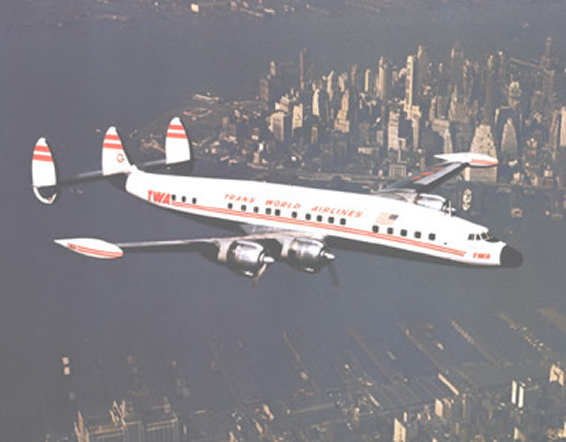 |
In 1939, at the urging of Jack Frye, president of TWA, Hughes quietly purchased a majority share of TWA stock for nearly US$7 million and took control of the airline. Upon assuming ownership of TWA, Hughes was prohibited by federal law from building his own aircraft. Seeking an aircraft that would perform better than TWA's fleet of Boeing 307 Stratoliners, Hughes approached Boeing's competitor, Lockheed. Hughes already had a good relationship with Lockheed since they had built the aircraft he used in his record flight around the world in 1938. Lockheed agreed to Hughes' request that the new aircraft be built in absolute secrecy. The result was the revolutionary Constellation and TWA purchased the first 40 of the new airliners off the production line.
Lockheed ConstellationIn 1956, Hughes placed an order for 63 Convair 880s for TWA at a cost of US$400 million. Although Hughes was extremely wealthy at this time, outside creditors demanded that Hughes relinquish control of TWA in return for providing the money. In 1960, Hughes was ultimately forced out of TWA, although he still owned 78 percent of the company and battled to regain control.
Before Hughes' ouster, the TWA jet financing issue precipitated the end of Hughes' relationship with Noah Dietrich. Dietrich claimed Hughes developing a plan by which Hughes Tool Company profits were to be inflated in order to sell the company for a windfall that would pay the bills for the 880s. Dietrich agreed to go to Texas to implement the plan on the condition that Hughes agreed to a capital gains arrangement he had long promised Dietrich. When Hughes balked, Dietrich resigned immediately. "Noah," Dietrich quoted Hughes as replying, "I cannot exist without you!" Dietrich stood firm and eventually had to sue to retrieve personal possessions from his office after Hughes ordered it locked.
In 1966, Hughes was forced by a U.S. federal court to sell his shares in TWA due to concerns over conflict of interest between his ownership of both TWA and Hughes Aircraft. The sale of his TWA shares netted him a profit of US$547 million. During the 1970s, Hughes went back into the airline business, buying the airline Air West and renaming it Hughes Airwest.
RKO
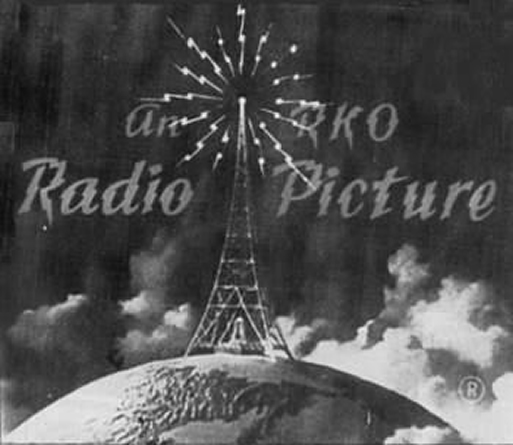 |
In 1948, Hughes gained control of RKO, a struggling major Hollywood studio, by acquiring 25% of the outstanding stock from Floyd Odlum's Atlas Corporation. During his tenure, RKO suffered as a result of his management style. Within weeks of taking control, he dismissed three-quarters of the work force and production was shut down for six months in 1949 while he undertook the investigation of the politics of all remaining studio employees. Completed pictures would be sent back for reshooting if he felt his star (especially female) was not properly presented, or if a film's anti-communist politics were not sufficiently clear. In 1952, an aborted sale to a Chicago-based group with no experience in the industry disrupted studio operations even further.
Hughes let go of the RKO theaters in 1953 as settlement of the United States v. Paramount Pictures, Inc. antitrust case. With the sale of the profitable theaters, the shaky status of the film studio became increasingly apparent. A steady stream of lawsuits from RKO's minority shareholders, charging him with financial misconduct and corporate mismanagement, became an increasing nuisance, especially because Hughes wanted to focus on his aircraft-manufacturing and TWA holdings during the Korean War years. Eager to be rid of the distraction, Hughes offered to buy out all other stockholders.
By the end of 1954, at a cost of nearly US$24 million, he had gained near total control of RKO, becoming the closest thing to a sole owner of a studio that Hollywood had seen in more than three decades. Six months later, Hughes sold the studio to the General Tire and Rubber Company for US$25 million. Hughes retained the rights to pictures he had personally produced, including those made at RKO. He also retained Jane Russell's contract. For Howard Hughes, this was the virtual end of his 25-year involvement in motion pictures; though he had all but destroyed a major Hollywood studio, his reputation as a financial wizard emerged unscathed. He reportedly walked away from RKO having made US$6.5 million in personal profit.
General Tire was interested mainly in exploiting the value of the RKO library for television programming, though it made some attempts to continue producing films. After a year and a half of mixed success, General Tire shut down film production at RKO for good at the end of January 1957. The studio lots in Hollywood and Culver City were sold to Desilu Productions later that year for US$6.15 million.
Medical Institute
In 1953, Hughes launched the Howard Hughes Medical Institute in Maryland, formed with the express goal of basic biomedical research including trying to understand, in Hughes' words, the "genesis of life itself." Hughes' first will, that he signed in 1925 at the age of 19, stipulated that a portion of his estate should be used to create a medical institute bearing his name. Hughes gave all his stock in the Hughes Aircraft Company to the institute, thereby turning the aerospace and defense contractor into a tax-exempt charity. The Howard Hughes Medical Institute's new board of trustees sold Hughes Aircraft in 1985 to General Motors for US$5.2 billion, allowing the institute to grow dramatically.
The deal was the topic of a protracted legal battle between Hughes and the Internal Revenue Service, which Hughes ultimately won. After his death in 1976, many thought that the balance of Hughes' estate would go to the institute, although it ultimately was divided among his cousins and other heirs, given the lack of a will to the contrary. The Howard Hughes Medical Institute is America's second largest private foundation and the largest devoted to biological and medical research, with an endowment of US$16.3 billion as of June 2007.
Watergate Scandal
Shortly before the 1960 Presidential election, Richard Nixon was harmed by revelations of a US$205,000 loan from Hughes to Nixon's brother Donald.
In late 1971, Donald Nixon was collecting intelligence for his brother in preparation for the upcoming presidential election. One of Donald's sources was John H. Meier, a former business adviser of Hughes who had also worked with Democratic National Chairman Larry O'Brien.
However, Meier conspired with former Vice President of the United States Hubert Humphrey and others to feed misinformation to the Nixon campaign. Meier told Donald that he was sure the Democrats would win the election because Larry O’Brien had a great deal of information on Richard Nixon’s illicit dealings with Howard Hughes that had never been released; O’Brien didn’t actually have any such information, but Meier wanted Nixon to think he did. Donald told his brother that O’Brien was in possession of damaging Hughes information that could destroy his campaign.
Glomar Explorer
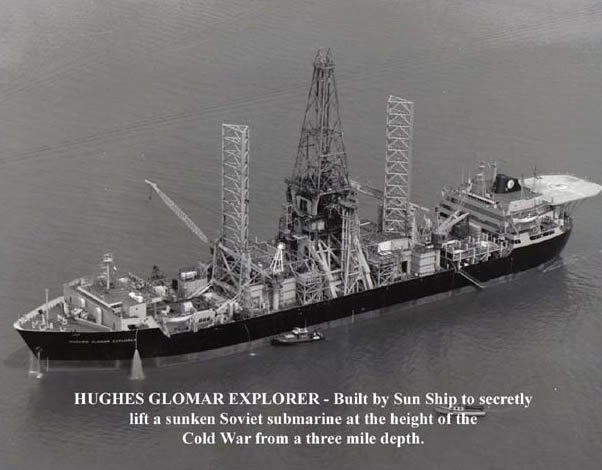 |
In 1972, Hughes was approached by the CIA to help secretly recover Soviet submarine K-129 which had sunk near Hawaii four years earlier. He agreed. Thus the Glomar Explorer, a special-purpose salvage vessel, was born. Hughes' involvement provided the CIA with a plausible cover story, having to do with civilian marine research at extreme depths and the mining of undersea manganese nodules. In the summer of 1974, Glomar Explorer attempted to raise the Soviet vessel.
However, during the recovery a mechanical failure in the ship's grapple caused half of the submarine to break off and fall to the ocean floor. This section is believed to have held many of the most sought after items, including its code book and nuclear missiles. Two nuclear-tipped torpedoes and some cryptographic machines were recovered, along with the bodies of six Soviet submariners who were subsequently given formal burial at sea in a filmed ceremony. The operation, known as Project Jennifer, became public in February 1975 because burglars had obtained secret documents from Hughes' headquarters in June 1974.
Mental and Physical Illness
In the 1930s, close friends reported that Hughes was obsessed with the size of peas, one of his favorite foods, and used a special fork to sort them by size. While directing The Outlaw, Hughes became obsessed by a minor flaw in one of Jane Russell's blouses, claiming that the fabric bunched up along a seam and gave the appearance of two nipples on each of Russell's breasts. He was reportedly so concerned by the matter as to write a detailed memorandum to the film crew on how to fix the problem.
Richard Fleischer, who directed His Kind of Woman with Hughes as executive producer, wrote at length in his autobiography about the difficulty of dealing with the famed tycoon. In his book, Just Tell Me When to Cry, Fleischer explained that Hughes was fixated on trivial details and was alternately indecisive and obstinate. He went on to say that Hughes' unpredictable mood swings made him wonder if the film would ever be completed.
In a bout of obsession with his home state of Texas, Hughes began purchasing all restaurant chains and four star hotels that had been founded within Texan borders. This included, if for only a short period, many unknown franchises currently out of business. Ownership of the restaurants was placed in the hands of the Howard Hughes Medical Institute and all licenses were resold shortly after.
Hughes insisted on using tissues to pick up objects, so that he could insulate himself from germs. It has also been said that he watched the 1968 film Ice Station Zebra some 150 times.
As a result of numerous plane crashes, Hughes spent much of his later life in pain, eventually becoming severely addicted to codeine, morphine, and other pain medication. It is believed that this addiction compounded the symptoms of Hughes' obsessive-compulsive disorder.
Once one of the most visible men in America, Hughes ultimately vanished from public view, although the tabloids continued to follow rumors of his behavior and whereabouts. He was variously reported to be terminally ill, mentally unstable, or even dead.
Though he always kept a barber on call, Hughes only had his hair cut and nails trimmed about once a year. Several doctors were kept in the house, but Hughes rarely saw them and usually refused to follow their advice. Toward the end of his life, his inner circle was largely composed of Mormons, as he considered them trustworthy even though Hughes himself was not a member of their church.
Managing the Financial Empire
As his empire grew, Hughes worked to minimize the company's taxes. In the early years of Hughes Aircraft, Hughes attempted to move his company from Southern California to Nevada in an effort to take advantage of Nevada's low tax rates. Ultimately, Hughes donated all his stock in Hughes Aircraft to the Howard Hughes Medical Institute, thereby turning the military contractor into a tax-exempt charity. In addition to avoiding income taxes, this had the effect of silencing the upper management in Hughes Aircraft, who for many years had clamored for stock in the company as part of their compensation.
Las Vegas Baron and Recluse
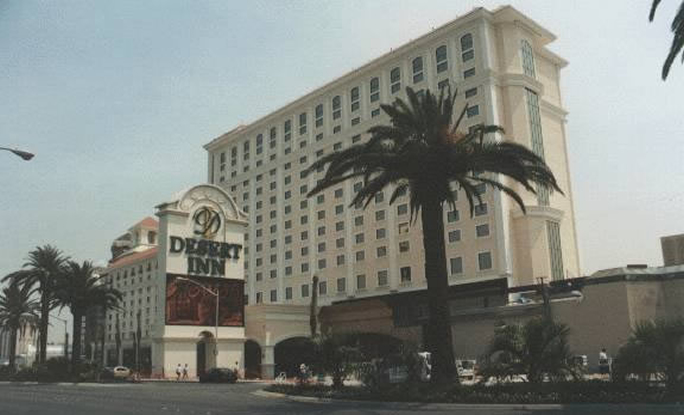 |
The wealthy and aging Howard Hughes, accompanied by his entourage of personal aides, moved from one hotel to another, always taking up residence in the top floor penthouse. During the last ten years of his life, from 1966 to 1976, Hughes lived in hotels in Beverly Hills; Boston; Las Vegas; Nassau, Bahamas; Freeport, Bahamas Xanadu Princess Hotel; Vancouver, Canada; London, England; Managua, Nicaragua; Acapulco, Mexico; and others.
On November 24, 1966 (Thanksgiving Day), Hughes arrived in Las Vegas by railroad car and moved into the Desert Inn. Refusing to leave the hotel and to avoid further conflicts with the owners of the hotel, Hughes bought the Desert Inn in early 1967. The hotel's eighth floor became the nerve center of his empire and the ninth-floor penthouse became Hughes' personal residence. Between 1966 and 1968, Hughes bought several other hotels/casinos (Castaways, New Frontier, The Landmark Hotel and Casino, Sands, and Silver Slipper). An unusual incident marked an earlier Hughes connection to Las Vegas. During his 1944 engagement at the Last Frontier hotel in Las Vegas, flamboyant entertainer Liberace mistakenly took Howard Hughes for his light director, instructing him to instantly bring up a blue light should he start to play "Claire De Lune". The alleged staff member nodded in accordance as the hotel's entertainment director approached the scene, properly introducing Howard Hughes to Liberace.
Hughes wanted to change the image of Las Vegas to something more glamorous than it was. As Hughes wrote in a memo to an aide, "I like to think of Las Vegas in terms of a well-dressed man in a dinner jacket and a beautifully jeweled and furred female getting out of an expensive car". Hughes bought several local television stations (including KLAS-TV).
Hughes' considerable business holdings were overseen by a small panel unofficially dubbed "The Mormon Mafia" because of the many Latter-day Saints on the committee. In addition to supervising day-to-day business operations and Hughes' health, they also went to great pains to satisfy Hughes' every whim. Hughes once became fond of Baskin-Robbins' Banana Nut ice cream, so his aides sought to secure a bulk shipment for him—only to discover that Baskin-Robbins had discontinued the flavor. They put in a request for the smallest amount the company could provide for a special order, 350 gallons (1,300 L), and had it shipped from Los Angeles. A few days after the order arrived, Hughes announced he was tired of Banana Nut and wanted only French Vanilla ice cream. The Desert Inn ended up distributing free Banana Nut ice cream to casino customers for a year, until the 350 gallons were gone.
As an owner of several major businesses in Las Vegas, Hughes wielded enormous political and economic power in Nevada and had a great of political influence there and elsewhere as a result. During the 1960s and early 1970s, Hughes disapproved of the underground nuclear testing that was then occurring in Nevada. Hughes was concerned about the risk posed by the residual nuclear radiation from the tests. Hughes attempted to halt the nuclear tests. When the tests finally went through despite Hughes' efforts, the detonations were powerful enough that the entire hotel in which he was staying trembled with the shock waves. In two separate, last-ditch maneuvers, Hughes instructed his representatives to offer million-dollar bribes to both presidents Lyndon B. Johnson and Richard Nixon. His aides never offered the bribes, reporting to Hughes that Johnson declined the offer and they were unable to contact Nixon. Hughes' personal correspondence makes it clear that the Nevada nuclear testing issue was the last straw leading to his self-imposed exile from the United States, which was to end only with his death.
In 1971, Jean Peters filed for divorce; the two had not lived together for many years. Peters requested a lifetime alimony payment of US$70,000 a year, adjusted for inflation, and waived all claims to Hughes' estate. Hughes offered her a settlement of over a million dollars, but she declined it. Hughes did not insist upon a confidentiality agreement from Peters as a condition of the divorce; aides reported that Hughes never spoke ill of her. She refused to discuss her life with Hughes and declined several lucrative offers from publishers and biographers. Peters would state only that she had not seen Hughes for several years before their divorce and had only dealt with him by phone.
Hughes was living in the Intercontinental Hotel near Lake Managua in Nicaragua, seeking privacy and security, when a magnitude 6.5 earthquake damaged Managua in December 1972. As a precaution, Hughes moved to the Nicaraguan National Palace and stayed there as a guest of Anastasio Somoza Debayle before leaving for Florida on a private jet the following day. He subsequently moved into the Penthouse at the Xanadu Princess Resort on Grand Bahama Island, which he had purchased recently. He lived almost exclusively in the penthouse of the Xanadu Resort and marina for the last four years of his life.
Hughes had spent a total of US$300 million on his many properties in Las Vegas.
Irving Memoir Hoax
In 1972, author Clifford Irving created a media sensation when he claimed to have co-written an authorized autobiography of Hughes. Hughes was such a reclusive figure that he did not immediately publicly refute Irving's statement, leading many people to believe Irving's book was a genuine autobiography. Before the book's publication, however, Hughes finally denounced Irving in a teleconference and the entire project was eventually exposed as a hoax. Irving was later convicted of fraud and spent 17 months in prison. The 2007 film The Hoax, starring Richard Gere, is based on these events.
Death and Burial
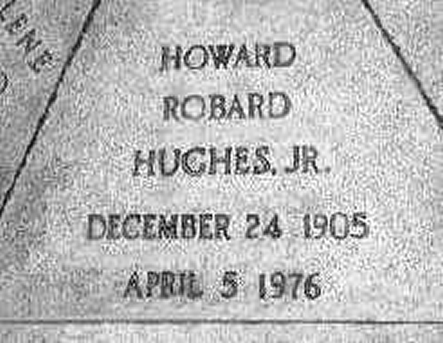 |
Hughes Family Gravesite at Glenwood CemeteryHughes died on April 5, 1976, at 1:27 PM while on an aircraft owned by Robert Graf, en route from his penthouse in Freeport Grand Bahama to The Methodist Hospital in Houston. It has also been argued that he died before leaving Mexico inside his penthouse at the "Acapulco Princess Hotel"[citation needed]. His reclusive activities and drug use had made him practically unrecognizable; his hair, beard, fingernails, and toenails had grown quite long, his tall 6'4" (193 cm) frame now weighed barely 90 lb (41 kg), and the FBI had to resort to fingerprints to identify the body.
A subsequent autopsy noted kidney failure as the cause of death. Hughes was in extremely poor physical condition at the time of his death; X-rays revealed broken-off hypodermic needles still embedded in his arms and severe malnutrition. While his kidneys were damaged, his other internal organs were deemed perfectly healthy.
Hughes is buried in the Glenwood Cemetery in Houston, Texas next to his parents.
Estate
Approximately three weeks after Hughes' death, a handwritten will was found on the desk of an official of The Church of Jesus Christ of Latter-day Saints in Salt Lake City. The so-called "Mormon Will" gave US$1.56 billion to various charitable organizations (including US$625 million to the Howard Hughes Medical Institute); nearly US$470 million to the upper-management in Hughes' companies and to his aides; US$156 million to first cousin William Lummis; US$156 million split equally between his two ex-wives Ella Rice and Jean Peters; and US$156 million to a gas-station owner named Melvin Dummar. Dummar initially denied any knowledge about the will but changed his story when his fingerprints were found on the envelope containing the will.
Dummar claimed to reporters that late one evening in December 1967, he found a disheveled and dirty man lying along U.S. Highway 95, 150 miles (250 km) north of Las Vegas. The man asked for a ride to Las Vegas. Dropping him off at the Sands Hotel, Dummar said the man told him he was Hughes. Dummar then claimed that days after Hughes' death, a "mysterious man" appeared at his gas station, leaving an envelope containing the will on his desk. Unsure if the will was genuine, and unsure of what to do, Dummar left the will at the LDS Church office. In a trial lasting seven months, the Mormon will was eventually rejected by the Nevada court in June 1978 as a forgery. The court declared that Hughes had died intestate.
Hughes' US$2.5 billion estate was eventually split in 1983 among 22 cousins, including William Lummis who serves as a trustee of the Howard Hughes Medical Institute. Dummar was largely discounted by the public as a phony and an opportunist. Jonathan Demme's film Melvin and Howard (starring Jason Robards and Paul Le Mat), was based on Dummar's tale.
The U.S. Supreme Court ruled that Hughes Aircraft was owned by the Howard Hughes Medical Institute, who sold it to General Motors in 1985 for US$5.2 billion. Suits brought by the states of California and Texas claiming they were owed inheritance tax were both rejected by the court. In 1984, Hughes' estate paid an undisclosed amount to Terry Moore, who claimed to have been secretly married to Hughes on a yacht in international waters off Mexico in 1949 and never divorced. Although Moore never produced proof of a marriage, her book, The Beauty and the Billionaire, became a bestseller.
Other Intersting Pictures
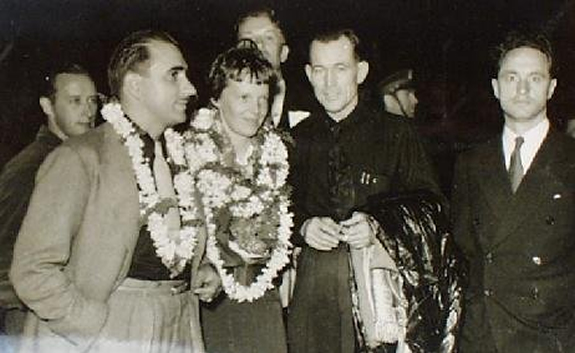 |
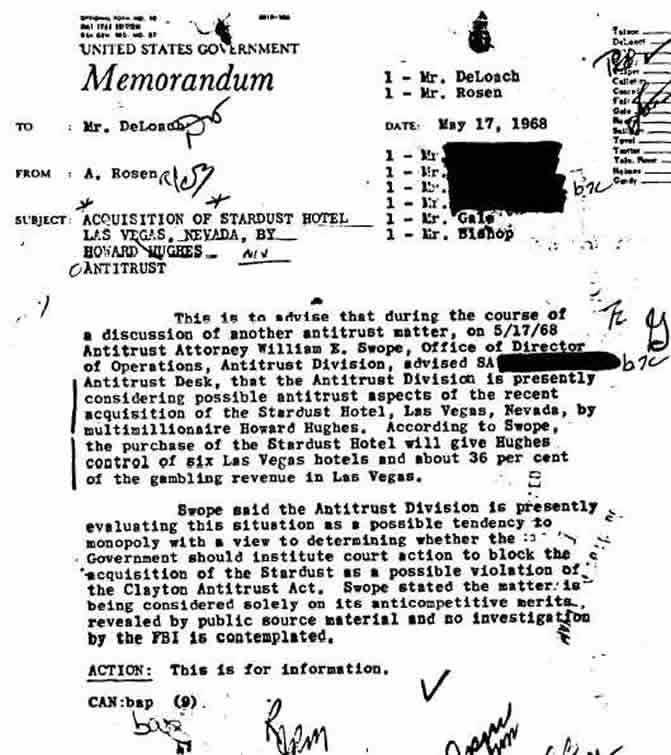 |
© AviationExplorer.com - The Website For Aviation Enthusiasts |






